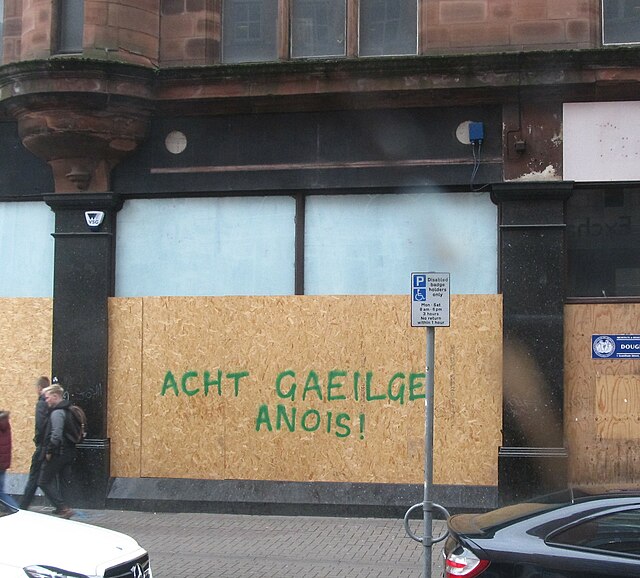Henry Burrows
“A dominant theme of the [provostial] campaign has been the sense that, for all its grandeur, Trinity is losing ground, especially to University College Dublin” (Irish Times, March 22nd)
The incoming fresher spends the summer before entering college envisioning, Front Square, the city centre location, the cobbles. The fresher leaves campus with aching feet having joined numerous societies and having tread the cobbles. Now, in a boon to Penney’s and other purveyors of thinly-soled shoes, Trinity is midway through a process of decobblisation.
It began last year, in a lonely corner of Front Square, between House 5 and 4, and almost leading to House 2, a 15 metre L shape of smooth paving leading nowhere. Like a provincial town’s approach to cycling lanes, here was an effort at wheelchair friendliness, shoved in an inappropriate spot, and leading nowhere.
Such was the success of the paved L that the Front Square is going to have it in its entirety. There have been previous attempts at smoothness, one in putting down tarmac along the side of the GMB, and the other replacing the original cobbles on the Campanile side of front square with their more rectangular counterparts as found in Fellows’ Square.
I am sure that the major building undertaking is in good faith, that its aim is to ensure ease of access, but the question is to where. They’ve taken a Ryanair approach; the paths will give you a pleasant tour of front square, and bring you quite close to the attractions, but there is still a border of cobble to get to where you want to go. There’s a larger problem though after you traverse the cobbled border, you always end at steps.
The path brings you to the Dining Hall, where you encounter ten steps, to the Chapel and Exam Hall, with three apiece, and the 1937 Reading Room with seven. In fact, the only place that has been given a little branch line right to the door is the International Office, Communications Office, the Office of the Chief Operating Officer, and the office of the Junior Dean. There’s no equality of access to education for those in wheel chairs, but there’s equality to punishment.
Therefore the path will get you to the bottom of your destination smoothly, but then you’re stuck. If the next stage is a ramp up to the dining hall, that will have to start in the beside the Campanile to give a suitable gradient.
Moreover, the paths may not increase safety. An unlit hurtling bike in the evening is not noticeable but for the bockety rattle over the cobbles. Cyclists will undoubtedly use the paths to ease posterior concerns, and this will cause hazards. I attended the creche in Trinity, and was therefore constantly buggied across Front Square, and the shaking did me no harm, if not the buggy.
It’s not even a terribly good or consistent job, notwithstanding the issues around the destinations it brings you to. All around the campus the original cobbles are used for edging, apart from on the Campanile side where the newer, supposedly smoother rectangular cobbles are used.
One person suggested to me that it was a Trinity Ball innovation, to protect College from litigation by the high heeled. A bird’s eye view of Trinity Ball will be like a game of Pac-Man as girls totter smoothly in straight lines and right angles to avoid the cobbles.
With decobblisation, Trinity is not only losing ground in the reputation stakes to the old enemy, but it’s also losing its ground in the form of its cobbled grandeur. And in these times of scarce resources, maybe a cobbled grandeur is the best we can hope for.








